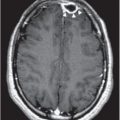| Streptococcus sanguis |
| Streptococcus mitis |
| Streptococcus salivarius |
| Streptococcus intermedius |
| Streptococcus uberis |
| Streptococcus mutans |
| Streptococcus constellatus |
| Streptococcus (Gemella) morbillorum |
Viridans streptococci are an important part of the normal microbial flora in humans. They are indigenous to the oral cavity, the upper respiratory tract, the female genital tract, and the gastrointestinal tract. Because these microorganisms lack traditional virulence factors, such as endo- and exotoxins, they are considered low virulence. However, a propensity to adhere to endovascular tissues accounts for their ability to produce endocarditis; extracellular dextran plays an important role in adherence and propagation of viridans streptococci on cardiac valves. Furthermore, some viridans streptococci are known to cause abscess formation, particularly the S. anginosus group (formerly known nonspecifically as Streptococcus milleri), composed of Streptococcus intermedius, Streptococcus constellatus, and S. anginosus.
Infections
Viridans streptococci are important causes of infective endocarditis. In addition, they are increasingly identified as causes of septicemia in immunocompromised hosts. With infection at other body sites, such as the central nervous system or lower respiratory tract, viridans streptococci may occur as sole pathogens but are more typically found as part of a mixed aerobic-anaerobic infection.
Infective endocarditis
Viridans streptococci account for approximately 20% to 40% of cases of infective endocarditis. The incidence of viridans streptococcal endocarditis has not changed appreciably since the American Heart Association recommended in 2007 the cessation of routine antibiotic prophylaxis before dental procedures for all but those at greatest risk. Typically, patients with infective endocarditis have underlying cardiac valve abnormalities, such as degenerative valve disease or rheumatic heart disease. Viridans streptococcal endocarditis develops insidiously and follows an indolent course. Fever, fatigue, and malaise are characteristic early clinical manifestations. In later stages of infection, cardiac murmurs may be detected in more than 90% of cases. Congestive heart failure and major embolic episodes are the most common complications of infective endocarditis, occurring in nearly one-third of cases. The critical element for diagnosis of infective endocarditis is demonstration of continuous bacteremia. In the absence of recent antimicrobial therapy, two blood cultures will yield viridans streptococci in 95% of cases. Echocardiography, either transthoracic or transesophageal, may provide additional diagnostic and prognostic information in cases of endocarditis.
Bacteremia and septicemia
Transient bacteremia due to viridans streptococci may occur in association with dental procedures but also with routine daily activities. It is rarely of clinical significance. In contrast, prolonged bacteremia has emerged as a genuine problem among patients undergoing cancer chemotherapy, especially among children. Viridans streptococci are now a leading cause of bacteremia in febrile, neutropenic patients in many cancer centers. Infection occurs in association with aggressive cytoreductive therapy for acute leukemia or bone marrow transplantation, typically after high-dose cytosine arabinoside treatment. Other predisposing factors include oral mucositis, prophylactic administration of trimethoprim–sulfamethoxazole (TMP–SMX) or quinolone, presence of an indwelling central venous catheter, and use of antacids or histamine type 2 (H2) antagonists. A fulminant shock syndrome characterized by hypotension, rash with palmar desquamation, acute renal failure, adult respiratory distress syndrome, and death has also been described. The viridans streptococcal shock syndrome occurs in up to 25% of pediatric patients with bacteremia, with mortality rates of 40% to 100%.
Meningitis and brain abscess
Viridans
Stay updated, free articles. Join our Telegram channel

Full access? Get Clinical Tree





